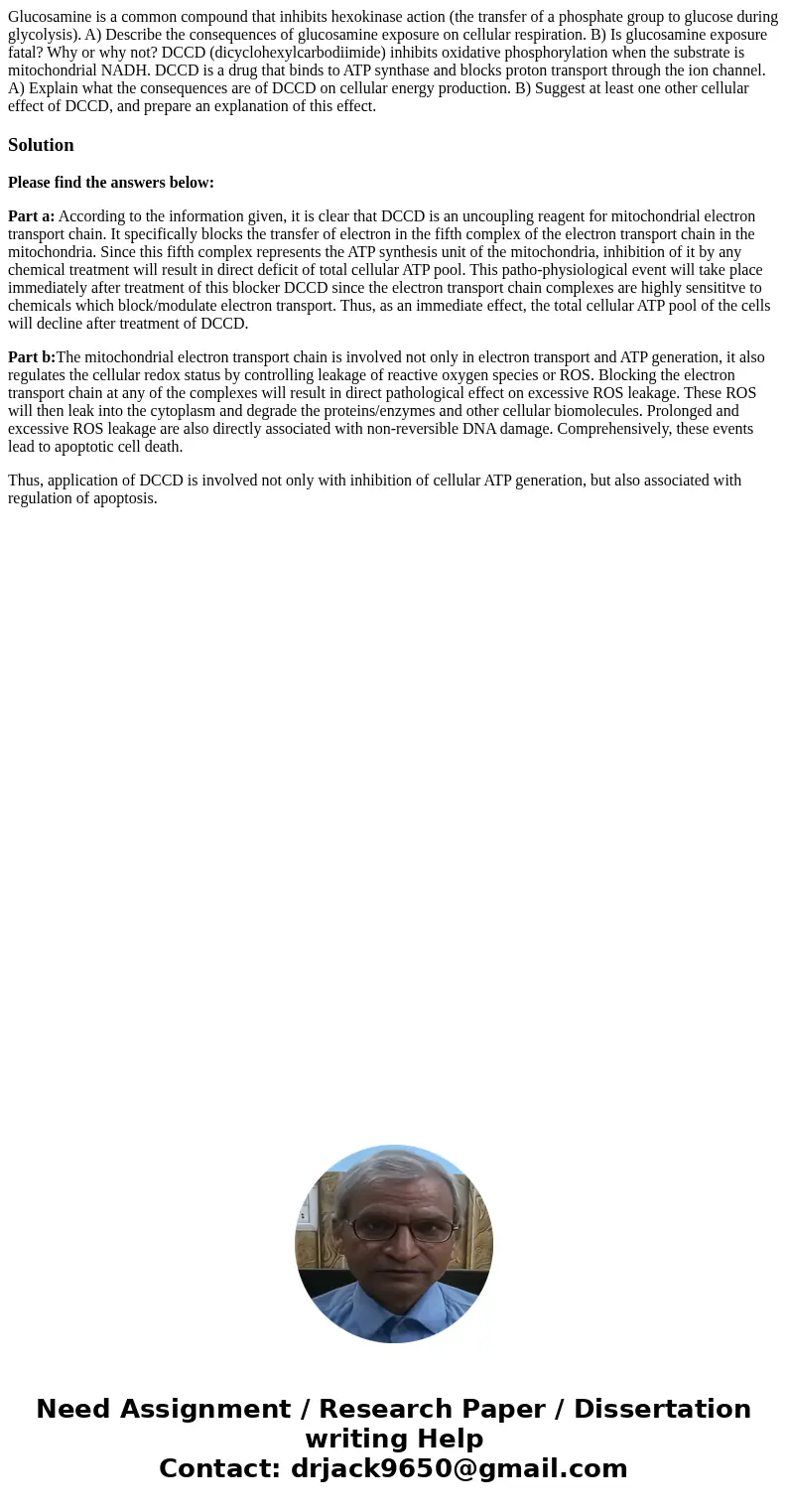Glucosamine is a common compound that inhibits hexokinase ac
Solution
Please find the answers below:
Part a: According to the information given, it is clear that DCCD is an uncoupling reagent for mitochondrial electron transport chain. It specifically blocks the transfer of electron in the fifth complex of the electron transport chain in the mitochondria. Since this fifth complex represents the ATP synthesis unit of the mitochondria, inhibition of it by any chemical treatment will result in direct deficit of total cellular ATP pool. This patho-physiological event will take place immediately after treatment of this blocker DCCD since the electron transport chain complexes are highly sensititve to chemicals which block/modulate electron transport. Thus, as an immediate effect, the total cellular ATP pool of the cells will decline after treatment of DCCD.
Part b:The mitochondrial electron transport chain is involved not only in electron transport and ATP generation, it also regulates the cellular redox status by controlling leakage of reactive oxygen species or ROS. Blocking the electron transport chain at any of the complexes will result in direct pathological effect on excessive ROS leakage. These ROS will then leak into the cytoplasm and degrade the proteins/enzymes and other cellular biomolecules. Prolonged and excessive ROS leakage are also directly associated with non-reversible DNA damage. Comprehensively, these events lead to apoptotic cell death.
Thus, application of DCCD is involved not only with inhibition of cellular ATP generation, but also associated with regulation of apoptosis.

 Homework Sourse
Homework Sourse